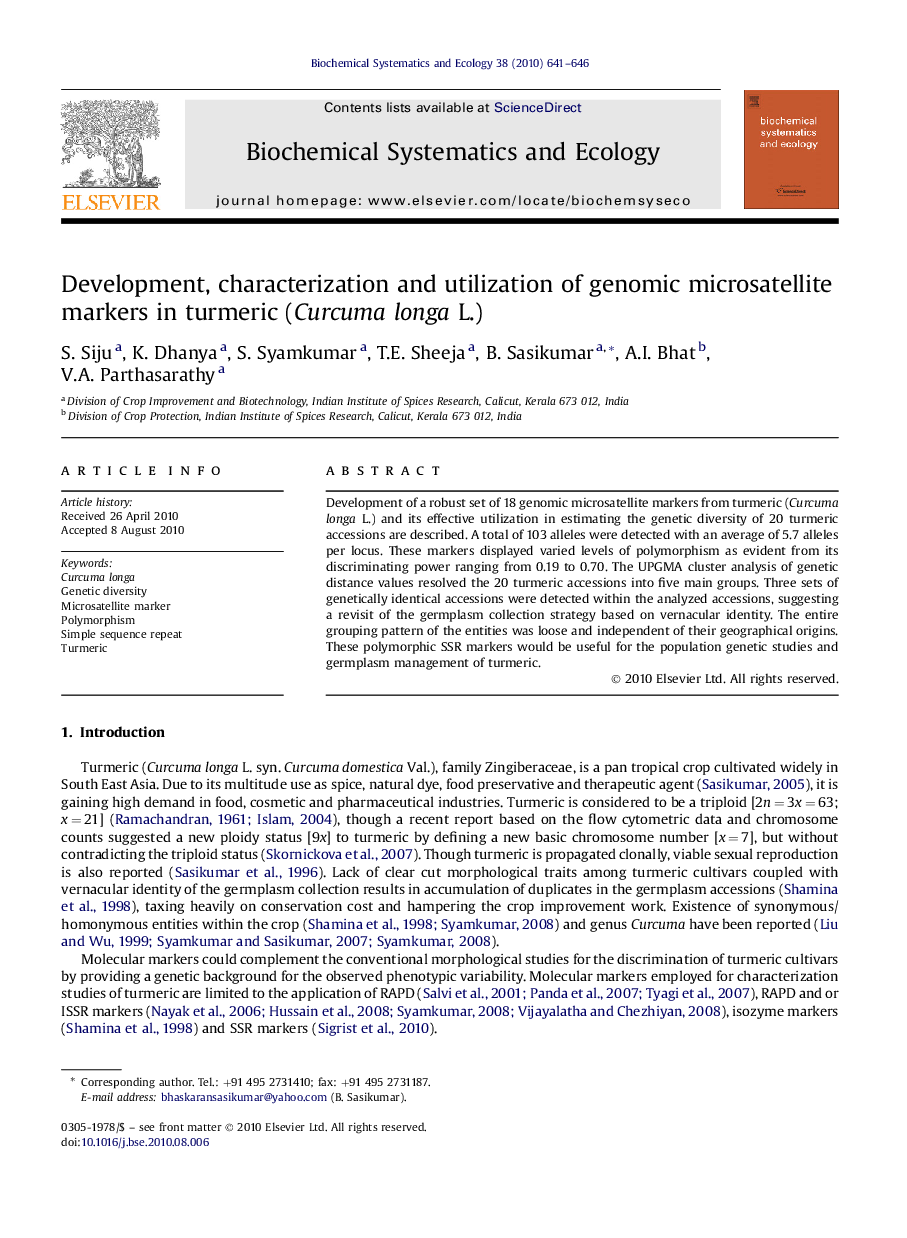| Article ID | Journal | Published Year | Pages | File Type |
|---|---|---|---|---|
| 1354382 | Biochemical Systematics and Ecology | 2010 | 6 Pages |
Development of a robust set of 18 genomic microsatellite markers from turmeric (Curcuma longa L.) and its effective utilization in estimating the genetic diversity of 20 turmeric accessions are described. A total of 103 alleles were detected with an average of 5.7 alleles per locus. These markers displayed varied levels of polymorphism as evident from its discriminating power ranging from 0.19 to 0.70. The UPGMA cluster analysis of genetic distance values resolved the 20 turmeric accessions into five main groups. Three sets of genetically identical accessions were detected within the analyzed accessions, suggesting a revisit of the germplasm collection strategy based on vernacular identity. The entire grouping pattern of the entities was loose and independent of their geographical origins. These polymorphic SSR markers would be useful for the population genetic studies and germplasm management of turmeric.
Research highlights► Developed a robust set of 18 genomic microsatellite markers from turmeric (Curcuma longa L.). ► Genetic diversity analysis of 20 turmeric accessions collected from different geographical locations of India indicated a loose grouping pattern independent of geographical origins. ► Three sets of genetically identical accessions were detected within the analyzed accessions. ► This study confirms that collecting turmeric accessions based on vernacular identity could result in adding duplicates in germplasm collections. ► These polymorphic markers could be used for genetic diversity of turmeric for generating reliable molecular data for crop improvement of turmeric.
